Broadway Bad (1933)
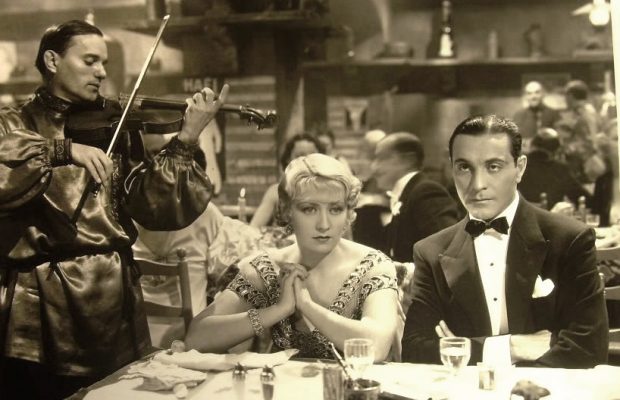
Toronto Film Society presented Broadway Bad (1933) on Sunday, September 23, 2018 in a double bill with Success at Any Price as part of the Season 71 Sunday Afternoon Special Screening #3.
Production Company: Fox Film Corporation. Director: Sidney Lanfield. Producer: Sol M. Wurtzel. Screenplay: Maude Fulton, Arthur Kober, based on the story by William R. Lipman, A. Washington Pezet. Cinematography: George Barnes. Music: Hugo Friedhofer, Arthur Lange. Art Direction: Gordon Wiles. Film Editing: Paul Weatherwax. Costume Design: Earl Luick. Songs: “Forget the Past” (Words & Music: Sidney Mitchell, Harry Akst), “Little Man” (Words & Music: L. Wolfe Gilbert, James F. Hanley). Release Date: February 24, 1933.
Cast: Joan Blondell (Tony Landers), Ricardo Cortez (Craig Cutting), Ginger Rogers (Flip Daly), Adrienne Ames (Aileen), Allen Vincent (Bob North), Francis McDonald (Charley Davis), Frederick Burton (Robert North, Sr.), Ronnie Cosbey (Big Fella), Donald Crisp (Darrall).
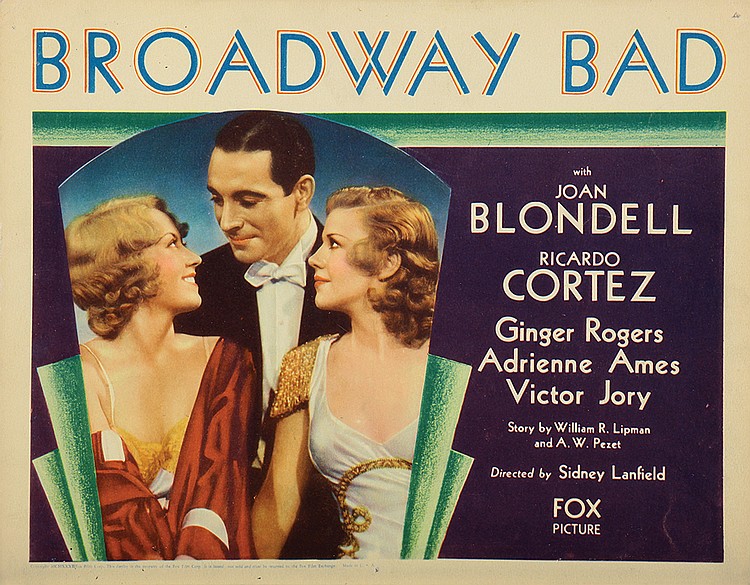
Today we’re going to see an Allen Vincent double bill. Allen Vincent? Who is he? The only reason I bring it up is because I noticed he was in both of today’s films. He had a short film career, spanning 10 years and 26 features. If you attended TFS’s Summer Series and saw The Mystery of the Wax Museum, he played Fay Wray’s boyfriend. But I’m really here to talk about Ricardo Cortez.
Several months ago, I read The Magnificent Heel: The Life and Films of Ricardo Cortez by Dan Van Neste. It’s well written and laid out in a well-thought-out format, first telling us Cortez’s life story followed by a detailed fact-filled summary and review of each individual film he ever acted in along with the few he directed.
I knew little about Ricardo Cortez’s personal life other than that he was born Jack Krantz and came from a poor Jewish New York family. His father, Morris, came from a middle-class Orthodox Hungarian/Austrian family, and, following his older brother, emigrated to America when he was 17 in 1894. He learned a typical Jewish trade, becoming a shirt maker and tailor. Ricardo’s mother, Sarah, was born in Hungary although her parents were Austrian, and she was better educated and worldlier than her husband. Ricardo was their first-born and four other siblings followed.
One sibling, Bernie Kranze, worked for many years in the New York sales departments of various movie studios, including RKO and United Artists. He also became notable as one of the executives and chief proponents of Cinerama, the widescreen process originally utilizing three cameras and three projectors synchronized to project a single image onto a curved screen.
A second brother who also went into the movie business, chose to change his last name from the family name to his famous brother’s, and we know him today as Stanley Cortez, the renowned cinematographer who photographed such films as The Magnificent Ambersons (1942), The Man on the Eiffel Tower (1949), The Night of the Hunter (1955) and The Three Faces of Eve (1957).
Ricardo Cortez was married three times, his first wife being silent film star Alma Rubens. I have only ever seen two films that she had bit parts in, one a short, The Mystery of the Leaping Fish and the other over three hours, Intolerance, both made in 1916, and still need to experience her in a lead role. The scandalous secret that Alma hid from most everyone, including her new husband, Ricardo, was that she was addicted to narcotics. Because of this addiction, she died quite young, at the age of 33, less than one month shy of her 34th birthday. She wrote an autobiography, Alma Rubens, Silent Snowbird, which was first published and serialized in the New York Daily Mirror in 1931, then went on to be published as a book in 2006. Apparently, what she wrote about her marriage to Ricardo wasn’t all factual, but nevertheless I’m sure it made for an interesting read.
Two other marriages followed, and these were to non-actors. His second was to socialite Christine Coniff Lee, whom he married in 1934. Her tragic death by fire occurred shortly after their divorce in 1940. His final marriage to RKO secretary Margarette Bell was successful, lasting from 1950 until his death at the age of 76 in 1977.
At some point after Broadway Bad’s release, the film was retitled Her Reputation. Although that might instantly explain Joan Blondell’s character’s dilemma, I think Broadway Bad is much more suitable for the glamour we all expect from early 30s films, especially when they depict the era of an Art Deco New York.
What is rather interesting to me is what the critics thought of Blondell’s character. Without telling you why, I think she just took the bulls by the horn after others let her down. In fact, it appears to me she kept her “values” intact throughout, since people seemed to care so much about her supposed cold-bloodiness. But of course, if she were Allen Vincent, who plays Bob North in the film, no one would care, this would all be a moot point and…hey, wait, no one does care!
So, with the ever-bodacious Blondell, Ginger Rogers playing the flippant Flip Daly, and many scantily clad females throwing around snarky banter, what more fun could you ask for on a Sunday afternoon!
Introduction by Caren Feldman
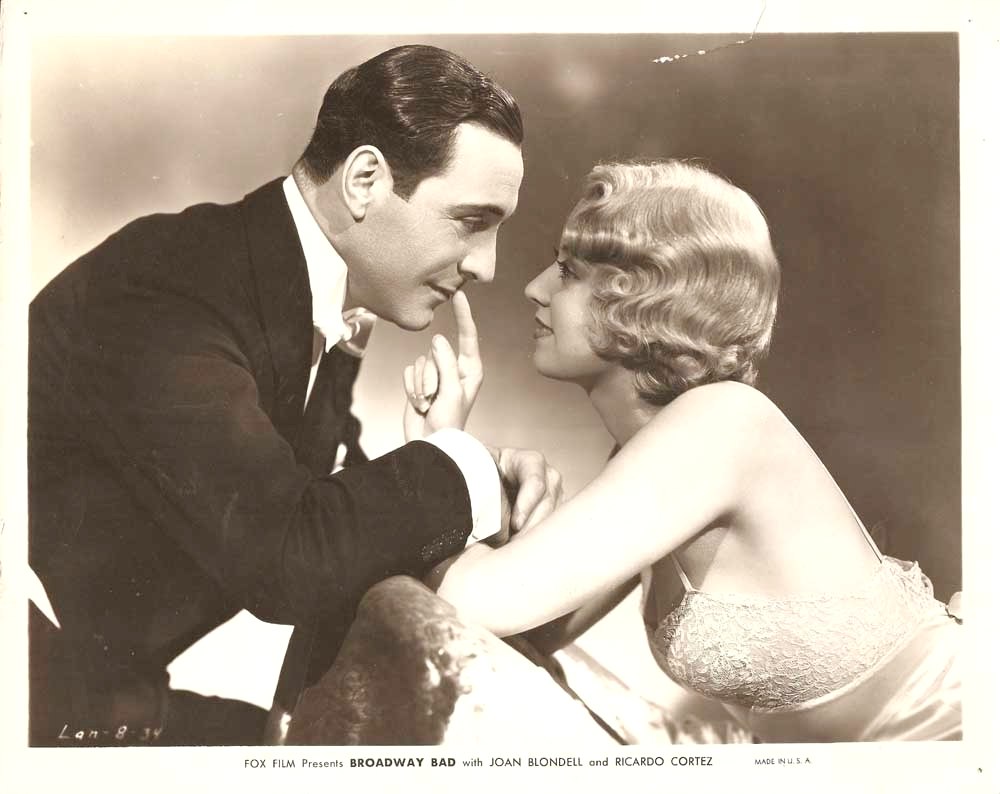
Produced in 1932 for an early-1933 release, Broadway Bad starts off with a pre-Code bang, with a long sequence of lingerie, legs, and lechery, and much snappy dialogue. Thereafter, its mood changes somewhat, and it turns at the half-way mark into something of a soap opera, vaguely akin to the Cary Grant/Loretta Young Born to Be Bad. Nevertheless, pre-Code touches and lines remain, as in Ginger Rogers’ carefully knocking wood when reminded of the possibility of becoming a mother. And the shot of the newspaper scurrying away in the wind, only to be blocked and then folding up in submission, is as novel a symbol for seduction (in this case, Blondell’s) as we’ve ever seen. Nicely mounted and photographed, and with some fascinating Times Square shots (with Murnau’s 4 Devils prominently on view), it’s a most enjoyable little film today, though one can understand its negative reviews at the time, since it was hardly much competition for the big first-runs that surrounded it when it opened in New York. Incidentally, Victor Jory is quite prominent in the original cast but does not appear to be in the film; possibly his role (or scene) was a casualty of getting the film down to a tight 59 minutes. This 16mm print, possibly the only one extant for the film, has never been shown on TV; was made from Fox’s preservation 35mm, so has not of itself been cut; and relates exactly to the original release version.
The New School Film Series 63: Program #8 by William K. Everson, December 8, 1989
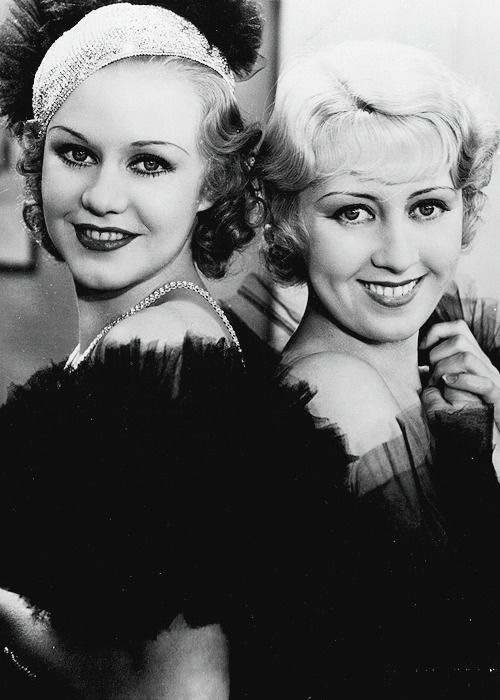
A Successful Chorus Girl
The new picture at the Palace is mediocre enough to persuade the disinterested visitor that the title would be a more accurate description if read backward. For Broadway is a more interesting street, and its habitués have a talent for doing more interesting things, than the pallid Broadway described in Broadway Bad. As a matter of record, the presence of a mysterious baby in the plot, for whom Joan Blondell, as Tony Landers, is supposed to feel an emotion which the audience finds it difficult to share, is no great help, either.
Tony, as the story gets under way, is a chorus girl of exemplary character who spurns the sinful advances of Craig Cutting, a wealthy amateur showman played by Ricardo Cortez. But she does marry a young scion of wealth who, shortly thereafter, divorces her on the unjust grounds that she has been too friendly with Cutting. Having been punished for her innocence, the girl now determines to reap the harvest of the lurid publicity she has received during the divorce proceedings. The result is that she becomes a name to conjure with in the theatre. She saves her money, preserves a cynical outlook toward Mr. Cutting and her other associates, and goes away every week-end to visit a baby which has been born to her on some indefinite earlier occasion. When the family of her former husband learn of the baby’s existence and try to take it away from her, Tony becomes the central figure in one of those court trials which only surprise the characters in the story. Mr. Cortez is the most amusing of the players, as the pleasantly cynical playboy with the evil reputation. Miss Blondell suffers the double burden of a foolish part and uncomplimentary photography. Ginger Rogers appears as a chorus girl with a sentimental streak.
The New York Times Review, A.D.S., March 6, 1933
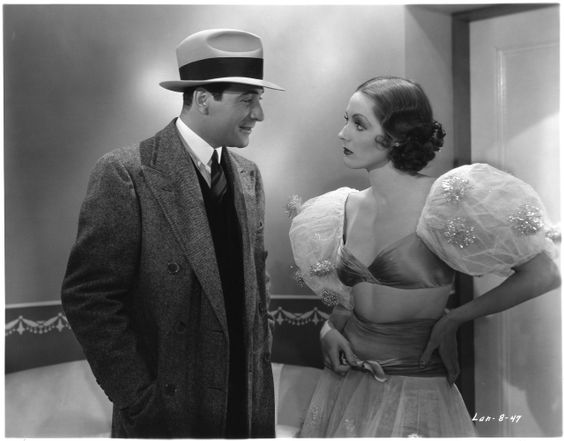
Nothing outstanding in this repetition of the undeserved reputation theme, but it’s a well-made picture with some snappy backstage stuff for the men, and the mother-love appeal for the women. Maybe the limb display is a little too strong in a few spots for the sticks, but Broadway Bad ought to keep the blushes off the balance sheet. Not a deluxe first-run, but good in other houses in the first division and pretty certain in the second flight. Photography is good and the sound is average, with clever direction and fair acting average.
It’s the story of the Broadway chorus girl who gets an undeserved reputation when her souse-marriage husband jumps at conclusions and divorces her. She lets the press agent do his worst, and her synthetic reputation lifts her from the chords to the lights. Husband, who is more or less of a cad, abetted by a rich dad, seeks to take her child from her on the plea that she is unfit to raise the boy, but she boomerangs the case by pretending that the child is that of the theatrical angel who was named co-respondent. So she turns to the angel and the story ends on the note of a marriage to him. The plot is pretty thin, with the adapters not getting around to suspense until near the close, but before that, there’s the building of the girl’s stage stuff with the story opening in a sleeper and the show making a jump. Practically all of the acting falls to Joan Blondell and Ricardo Cortez, both coming through with strong contributions. Miss Blondell, in particular, makes her chorus girl generally believable and plays with a note of sincerity. No one pulls the story out of shape, but no one gets through with a score. Ginger Rogers comes closest to attracting secondary attention.
Variety by Chic., March 7, 1933
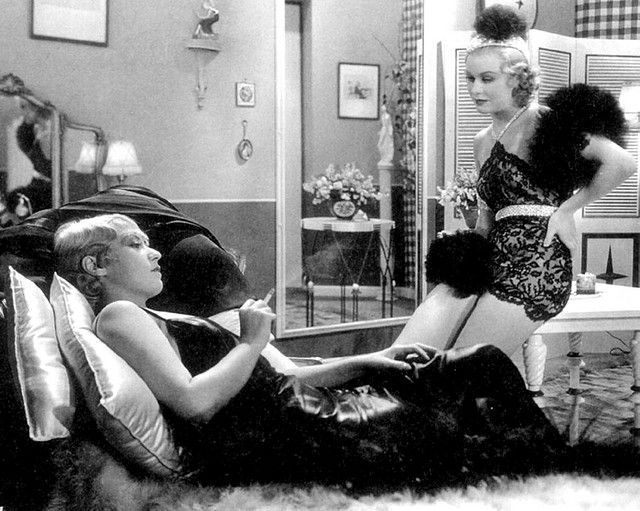
The Subdued Blondell
Broadway Bad gives Joan Blondell a lot of fine clothes, a limousine, money, an apartment at 900 Park Avenue, and even a baby—but what’s the good of all that luxury when it doesn’t understand her? Miss Blondell submits to the expensive trappings, for she is an amiable girl, but they smother her personality; dim her own precious sparkle; and change her into just another routine heroine who, however, hasn’t the technical good looks to conquer so stereotyped a role. Her briskness is gone; she even loses a good measure of her likableness. She’s in the wrong environment and she knows it; when Miss Blondell is uncomfortable and depressed in a picture, something’s very much the matter.
Broadway Bad is so insensitive to the real Blondell that it starts her off as an innocent country child and finishes her as a hard-headed, cold-blooded, financially successful trollop. Mechanically, she goes through the motions of each phase, achieving the illusion of neither. Her sense of humor and her sincerity atrophy with no opportunity for expression. The baby who finally clambers into the story completes the rout, for Miss Blondell—poor, put-upon creature—has to call him “Big Fella”. Miss Blondell must not let herself get so discouraged, however, that she neglects to keep her hair at its part as blonde as it is at the ends. She should have rebelled at the utter lack of synchronization of the voice dubbed in when she is supposed to be singing. Since grand clothes were her only reward for suppressing her personality, she should have refused the white ermine jacket with its shawl collar criss-crossed with brown. Ginger Rogers, prettier than ever, more natural and spontaneous, alone escapes stifling at the clumsy hands of Broadway Bad.
Variety: Going Places by Cecelia Ager, March 7, 1933
With Joan Blondell and Ricardo Cortez for the marquee, and Ginger Rogers and Adrienne Ames in support, and a combination of gold-digging show girls, penthouses, and mother love for story theme and catch lines, Broadway Bad contrives to be moderately entertaining and reasonably well constructed. Its appeal necessarily is more definitely to the feminine patronage, with an emphasis on the behind-the-scenes show angle, the broad-mindedness of Cortez important as a possible means of attracting a sizable representation of the other sex. This must rank as regular run film fare, having but little to bring it above the average in construction, performance, story, or development. The work of Miss Blondell and Cortez merits attention, Cortez being particularly smooth in his performance. Where Miss Blondell has her friends, her name will of itself attract a goodly portion of patronage.
Attracting the attention of Cortez, millionaire and show backer, she is given a chorus opportunity. In a hasty affair, she marries Allen Vincent, wealthy college boy, who later misunderstands the attention that Cortez—not knowing she is married—pays to her. A divorce is obtained and Miss Blondell goes in for gold-digging on a large and successful scale, while the notoriety resulting from the divorce brings her name to top lights on the musical stage. Upon her hidden child she lavishes all the affection possible until Vincent—in a crooked deal and in need of money—attempts blackmail and tries to take the child from her by legal means on the grounds of unfitness; then she becomes the fighting mother, about to be bereft of her offspring. In court the judge is about to award the child to its father, Vincent, when she declares it not his but that of Cortez, a misrepresentation in which Cortez, seated among the spectators, acquiesces with a nod. Case dismissed, and the rest is left to the imagination.
Miss Blondell is here seen in a somewhat different role than her audience expects for her—that of a mother, with the gold-digging pursued relentlessly only as a means of providing the best of care for the child. This becomes an angle worth capitalizing in selling the picture. There is nothing here that could interest children.
Motion Picture Herald: Showmen’s Review by Aaronson, New York, March 11, 1933
(This department deals with new product from the point of view of the exhibitor who is to purvey it to his own public.)
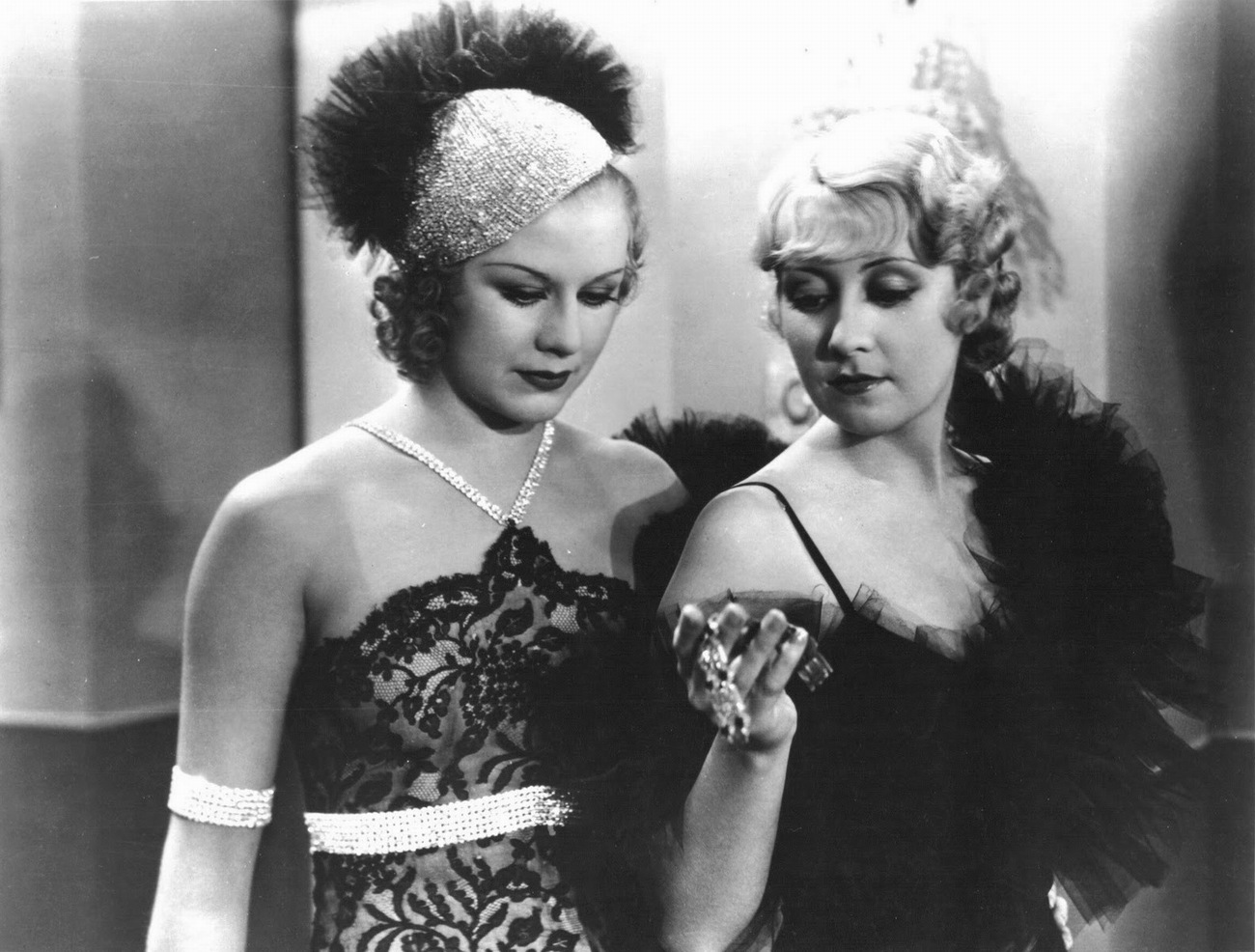
Trolley Jazzed
For Broadway Bad, the Palace, New York, used a display in the lobby, extending from side to side, showing a section of a street, presumably Broadway itself. To jazz things up, a trolley car ran back and forth on an endless belt, a recess at each end of the sign permitting the fan to turn around out of sight. Where this idea is used, there should be only one point of contact between the car and the belt, to permit it to round the pulley at either end. Round belting is best. Where there is a sufficient depth it would be better to use a belt with several cars which are returned through a tunnel masked by the display of the title and sales copy. Belts running in opposite directions will give more life to the display, but a lot of people were stopped by the single car in the Palace display.
Variety: Exploitation by Epes W. Sargent, March 21, 1933
Notes compiled by Caren Feldman


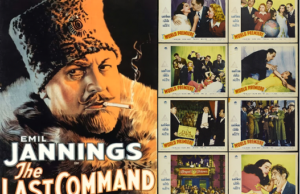







Leave a Reply